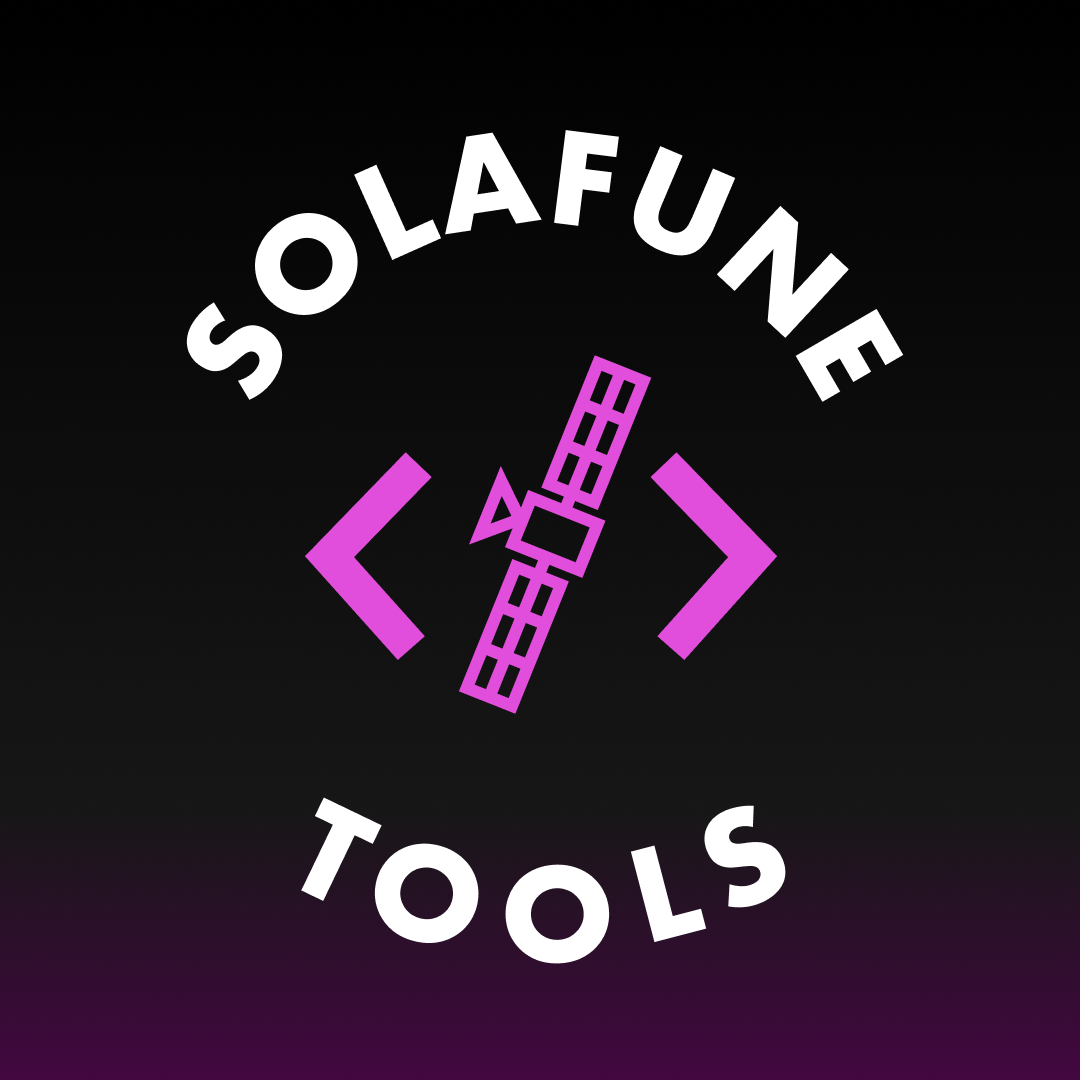Solafune internal geodata management tools
Project description
solafune_tools: Internal Geodata Creation and Management Tools
This package contains tools to download STAC catalogs and Sentinel-2 imagery from Planetary Computer and assembling it into a cloudless mosaic. Other tools will be added in the future.
Quickstart
Install the package using pip or uv pip, recommend using python 3.10:
uv pip install solafune_tools
All public-facing functions have detailed docstrings explanining their expected inputs and outputs. You can check any of them through print(solafune_tools.function_name.__doc__) (if you don't use print it shows as an unstructured string) or ??solafune_tools.function_name in jupyter notebooks.
Before using the library, you can set the directory where you want to store data by calling
solafune_tools.set_data_directory(dir_path="your_data_dir_here")
The above command sets the environment variable solafune_tools_data_dir from where all sub-modules draw their file paths. It is not set persistenly (i.e., not written to .bashrc or similar), so you will need to set it each time you ssh into your machine or on reboot. If you do not explicitly set this, it will default to creating/using a data folder within your current working directory.
A one-shot command exists to make a cloudless mosaic given a daterange and area of interest.
Before running this function, create a Dask server and client. This function uses lazy chunked xarray Dataarrays which can (and should) be processed in parallel. The simplest way to do so is to open a Jupyter notebook and paste the following code into it. If you call this from within a python script, you need to put it under a if __name__ == "__main__": block to work.
from dask.distributed import Client, LocalCluster
cluster = LocalCluster()
client = Client(cluster)
client
It will print out a dashboard link for your cluster that you can use to track the progress of your function. The actual function call is below.
mosaics_catalog = solafune_tools.create_basemap(
start_date="2023-05-01",
end_date="2023-08-01",
aoi_geometry_file="data/geojson/xyz_bounds.geojson",
kwargs_dict={"eo:cloud_cover": {"lt": 10}, "s2:nodata_pixel_percentage": {"lt":20}},
bands="Auto",
mosaic_epsg="Auto",
mosaic_resolution=100,
clip_to_aoi=True,
)
You can pass in planetary computer query fields as keyword arguments to apply them as filters on your item queries. If you want your mosaic broken up into tiles, pass in a tile_size argument (size in pixels). Tiles for the below call will be 100x100 except that the right and bottom boundaries of the mosaic where they maybe rectangular and smaller due to the mosaic not accomodating an integer number of tiles. You can also pass a list for bands like bands = ['B02','B04'] if you want to select only certain bands to make a mosaic. Further, you can choose to make several single band mosaics or a multiband mosaic by passing in Singleband or Multiband to this function. You can also choose whether to use the Median or Minimum value of each pixel in an image stack to create the mosaic by setting mosaic_mode.
mosaics_catalog = solafune_tools.create_basemap(
start_date="2023-05-01",
end_date="2023-08-01",
aoi_geometry_file="data/geojson/xyz_bounds.geojson",
bands=['B02','B04'],
mosaic_epsg="Auto",
mosaic_resolution=100,
clip_to_aoi=True,
tile_size=100,
mosaic_style='Multiband',
mosaic_mode='Median',
)
The output is a link to a STAC catalog of all mosaics generated so far in the current data directory. See point 6 in the workflow below to see how to load and query it.
A typical workflow to assemble a cloudless mosaic is as follows. I strongly recommend leaving all outfile and outdirectory naming to 'Auto' if you choose to run these functions one by one.
- Get the Sentinel-2 catalog items for your area of interest (pass in a geojson) and a date range.
plc_stac_catalog = solafune_tools.planetary_computer_stac_query(
start_date="2023-05-01",
end_date="2023-08-01",
aoi_geometry_file= "data/geojson/xyz_bounds.geojson",
kwargs_dict={"eo:cloud_cover": {"lt": 10}, "s2:nodata_pixel_percentage": {"lt":20}},
outfile_name='Auto'
)
- Download files for the bands you want for these catalog items.
tiffile_dir = solafune_tools.planetary_computer_fetch_images(
dataframe_path=plc_stac_catalog,
bands=["B02", "B03", "B04"],
outfile_dir='Auto',
)
- Assemble a STAC catalog of local files (this is necessary for mosaicking)
local_stac_catalog = solafune_tools.create_local_catalog_from_existing(
input_catalog_parquet=plc_stac_catalog,
bands=["B04", "B03", "B02"],
tif_files_dir=tiffile_dir,
outfile_dir='Auto',
)
- Make a cloudless mosaic. Make sure to have a Dask cluster running for this step. Otherwise, it will either take days to finish or crash out with memory errors. Only pass in a geometry file if you want to your mosaic clipped to that geometry.
mosaic_file_loc = solafune_tools.create_mosaic(
local_stac_catalog=local_stac_catalog,
aoi_geometry_file=None,
outfile_loc='Auto',
out_epsg='Auto',
resolution=100,
bands='Auto',
mosaic_style='Multiband',
mosaic_mode='Median',
)
- Update the STAC catalog for the mosaics folder.
mosaics_catalog = solafune_tools.create_local_catalog_from_scratch(
infile_dir='Auto',
outfile_loc='Auto'
)
- The STAC catalog contains the geometry, date range and bands for each mosaic tif stored in the directory. Now you can query the catalog by loading it as a
Geopandas.geodataframeand filtering for various conditions. The links for each mosaic are stored under the columnassetsunder the dictionary keymosaicfollowed byhref.
geodataframe = solafune_tools.get_catalog_items_as_gdf(mosaics_catalog)
your_query = geodataframe.geometry.intersects(your_roi_geometry) & (geodataframe['datetime']=='2021-03-01')
results = geodataframe[your_query]
your_mosaic_tif_locs = [asset['mosaic']['href'] for asset in results.assets]
# merge your mosaic tifs, do windowed reads, whatever else you need
Project details
Release history Release notifications | RSS feed
Download files
Download the file for your platform. If you're not sure which to choose, learn more about installing packages.
Source Distribution
Built Distribution
Hashes for solafune_tools-0.3.0-py3-none-any.whl
| Algorithm | Hash digest | |
|---|---|---|
| SHA256 | 525fc46c9a5fbbbc975806cffdbb0eaffce7b9a8b1cc72a6919372c92f8ee627 |
|
| MD5 | 043c95ac958dad5f7f21c580cd06bf3b |
|
| BLAKE2b-256 | be1c330c77933ed30cc38e2b77e8fce64b85786179dcc1ee334116155cb15352 |













